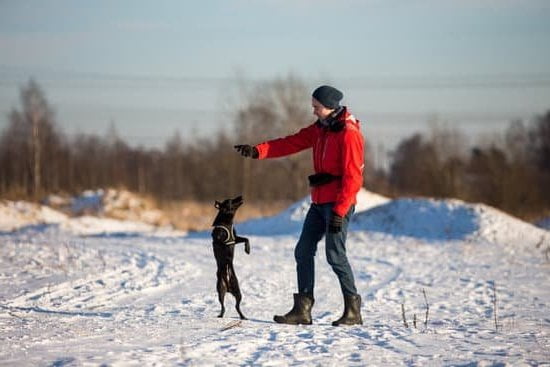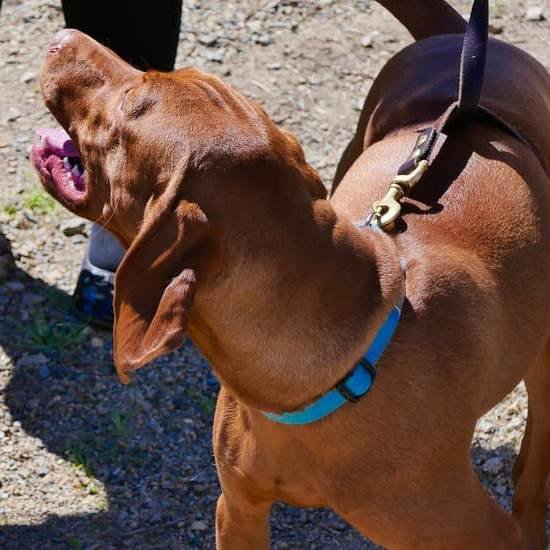Are you struggling with a dog that barks excessively? In this article, we will discuss how to train your dog not to bark by exploring the reasons behind excessive barking and effective training techniques. Understanding the root of the barking issue is crucial in addressing this behavior, and we will provide tips on establishing clear communication, using positive reinforcement, desensitization techniques, and providing mental and physical stimulation for your furry friend.
Dogs bark for various reasons, including boredom, anxiety, fear, or simply as a form of communication. By understanding the underlying causes of excessive barking, you can effectively address this behavior through appropriate training methods. Through consistent training and understanding your dog’s body language, you can work towards minimizing excessive barking and fostering a well-behaved pet.
Training your dog not to bark requires patience and dedication. With the right approach and understanding of your dog’s needs, you can create a harmonious environment for both you and your furry companion. We will also discuss when it may be necessary to seek professional help from a dog trainer or behaviorist to address persistent barking issues.
Effective Communication
Establishing clear and consistent commands with your dog is essential in training them not to bark excessively. By effectively communicating with your pet, you can help them understand what behavior is expected of them and discourage unnecessary barking.
The Importance of Clear Commands
One key aspect of training your dog not to bark is using clear and simple commands that they can easily understand. When giving verbal commands such as “quiet” or “enough,” use a firm but calm tone to convey your message. Avoid yelling or using overly aggressive tones, as this may cause confusion or fear in your dog.
Consistency Is Key
Consistency in how you communicate with your dog is crucial for successful training. Make sure that all members of the household use the same commands and respond consistently to barking behavior. Inconsistency can lead to confusion and make it more challenging for your dog to learn what is expected of them.
Training Techniques
Training techniques such as positive reinforcement can also be effective in teaching your dog not to bark excessively. When your dog responds appropriately to a command by staying quiet, be sure to offer praise and rewards such as treats or favorite toys. This helps reinforce the desired behavior and encourages your dog to continue obeying the command in the future.
By establishing clear and consistent commands, using positive reinforcement, and maintaining consistency throughout the training process, you can effectively teach your dog not to bark excessively. Recognizing that each dog is unique, it may take time and patience to find the best approach for training your specific pet on how to train your dog not to bark.
Positive Reinforcement
Have you ever wondered how to train your dog not to bark excessively? Positive reinforcement is a widely used and effective method for encouraging desired behavior in dogs. By using praise and rewards, you can effectively communicate with your dog and encourage them to stop excessive barking.
When it comes to training your dog not to bark, positive reinforcement involves rewarding your dog for staying quiet in situations where they would normally bark. This could be done by providing treats or verbal praise when your dog refrains from barking in response to a trigger. For example, if your dog usually barks at the doorbell, you can reward them when they remain quiet after the bell rings.
It’s important to remember that consistency is key when using positive reinforcement to train your dog not to bark. You must be diligent in rewarding the desired behavior every time it occurs. This will help reinforce the idea that staying quiet results in positive outcomes, ultimately leading to a reduction in excessive barking. By utilizing positive reinforcement techniques, you can effectively communicate with your dog and encourage them to exhibit desirable behaviors such as not barking excessively.
Desensitization Techniques
One effective method for training your dog not to bark excessively is through desensitization techniques. This involves gradually exposing your dog to the triggers that cause them to bark, such as other dogs, strangers, or loud noises. The goal is to help your dog become less reactive and anxious in these situations, ultimately reducing their barking behavior.
To start desensitizing your dog, you can begin by identifying the specific triggers that set off their barking. Once you have identified these triggers, you can then slowly introduce them to your dog in a controlled and calm manner. For example, if your dog tends to bark at strangers, you can start by having strangers approach from a distance while giving your dog treats and praise for remaining calm.
It’s important to progress at a pace that is comfortable for your dog and to always use positive reinforcement during the desensitization process. By associating the triggers with positive experiences like treats and praise, you can help your dog learn that these situations are not something to be feared or reacted to with excessive barking.
| Desensitization Technique Steps | Benefits |
|---|---|
| Identify specific triggers | Helps create a structured desensitization plan |
| Gradually expose dog to triggers | Allows the dog to acclimate to the trigger in a controlled environment |
| Use positive reinforcement | Associates triggers with positive experiences for the dog |
Providing Mental and Physical Stimulation
Engaging in Physical Activities
One effective way to prevent boredom-related barking in dogs is to ensure they get enough physical exercise. Daily walks, playtime, and interactive toys can help keep your dog physically engaged and reduce the likelihood of excessive barking. Engaging in activities such as fetch, tug-of-war, or agility training can also provide mental stimulation, which is essential for preventing boredom-related barking.
Utilizing Puzzle Toys and Interactive Games
Another way to keep your dog mentally engaged is by using puzzle toys and interactive games. These toys can challenge your dog’s problem-solving abilities and provide mental stimulation to prevent boredom-related barking. There are various puzzle toys available on the market that can be filled with treats or kibble, encouraging your dog to work for their food and keeping them occupied for extended periods.
Creating a Structured Routine
Establishing a consistent daily routine can also help prevent boredom-related barking in dogs. This includes regular feeding times, exercise sessions, playtime, and training activities. Dogs thrive on routine and structure, so having a predictable schedule can reduce anxiety and provide a sense of security for your pet. By keeping your dog mentally and physically stimulated through a structured routine, you can effectively prevent boredom-related barking.
By implementing these strategies for providing mental and physical stimulation, pet owners can significantly reduce their dog’s likelihood of engaging in excessive barking due to boredom. Keeping dogs engaged both mentally and physically not only prevents behavioral issues but also contributes to their overall well-being and happiness.
Seeking Professional Help
When it comes to training your dog not to bark excessively, there may come a time when seeking professional help is necessary. While the previous sections have provided valuable tips and techniques for addressing your dog’s barking behavior, there are instances where the expertise of a professional dog trainer or behaviorist can make a significant difference in modifying your dog’s behavior. Here are some signs that indicate it may be time to consult a professional:
- Your dog’s excessive barking is causing disruption to your daily life or your neighbors
- You have tried various training methods without success
- Your dog’s barking is accompanied by other behavioral issues such as aggression or anxiety
A professional dog trainer or behaviorist has the knowledge and experience to assess your dog’s behavior and provide personalized guidance and support. They can also offer specialized training programs tailored to address specific triggers that cause your dog to bark excessively. Additionally, they can work with you to develop a comprehensive behavior modification plan that focuses on the root causes of your dog’s barking.
Furthermore, consulting a professional can also help you better understand how to train your dog not to bark by addressing any underlying issues such as fear, stress, or anxiety. These experts are equipped to recognize subtle cues in your dog’s body language that may indicate distress, allowing them to tailor their approach accordingly.
By seeking professional help, you can gain valuable insights into your dog’s behavior and work towards creating a harmonious relationship based on trust and clear communication.
Consistency Is Key
Consistency is crucial when it comes to training your dog not to bark excessively. By establishing a consistent training routine, you are helping your dog understand what is expected of them and reinforcing desired behaviors. Here are some key ways to emphasize consistency in your training approach:
- Set clear and consistent commands: Use the same verbal cues and hand signals every time you want to communicate with your dog. This helps avoid confusion and reinforces the desired behavior.
- Stick to a regular schedule: Dogs thrive on routine, so try to feed, walk, and train your dog at the same times each day. Consistency in their daily schedule can help reduce anxiety and prevent boredom-related barking.
- Enlist the help of family members: Ensure that everyone in the household is on board with the training plan and consistently reinforces the same rules and commands. Inconsistency can confuse your dog and hinder progress.
By maintaining consistency in your training methods, you are sending a clear message to your dog about what is expected of them. This can help create a harmonious relationship based on trust and understanding.
Remember that consistency also applies to how you respond to unwanted barking behavior. It’s important for everyone in the household to react in a consistent manner when addressing excessive barking. This will help reinforce positive habits and discourage negative behaviors more effectively.
Ultimately, by emphasizing consistency in both your training techniques and daily routines, you can set your dog up for success in learning how to control their barking behavior.
Understanding Your Dog’s Body Language
In conclusion, addressing excessive barking in dogs requires a comprehensive approach that tackles the root of the issue. By understanding the reasons behind your dog’s barking behavior and utilizing effective communication, positive reinforcement, desensitization techniques, and providing mental and physical stimulation, you can begin to train your dog not to bark excessively. It is important to recognize when professional help is needed and to emphasize consistency in training and routines.
One effective way of addressing the underlying causes of barking is by recognizing your dog’s body language. Understanding the signs of stress, fear, and anxiety in your dog can help you address these underlying causes. By being attentive to your dog’s body language, you can identify triggers that lead to excessive barking and take proactive steps to alleviate their distress.
Overall, training your dog not to bark excessively requires patience, dedication, and a deep understanding of your pet’s behavior. It is essential to establish clear communication with your dog, provide positive reinforcement for desired behavior, and create a stimulating environment for them. By taking these steps and being attuned to your dog’s body language, you can effectively address the underlying causes of barking and cultivate a well-behaved furry companion.
Frequently Asked Questions
What Is the Quiet Command for Dogs?
The quiet command for dogs is a verbal cue or hand signal that is used to train the dog to stop barking on command. This can be achieved through positive reinforcement training methods.
How Do I Train My Dog Not to Bark Aggressively?
Training a dog not to bark aggressively involves identifying the triggers that cause aggressive barking and addressing them through desensitization and counterconditioning techniques. It also requires consistent training and patience.
Do Anti Barking Devices Work?
Anti-barking devices, such as citronella collars or ultrasonic deterrents, can be effective in some cases to reduce excessive barking behavior in dogs. However, their effectiveness may vary depending on the individual dog and the specific circumstances.

Welcome to the blog! I am a professional dog trainer and have been working with dogs for many years. In this blog, I will be discussing various topics related to dog training, including tips, tricks, and advice. I hope you find this information helpful and informative. Thanks for reading!





